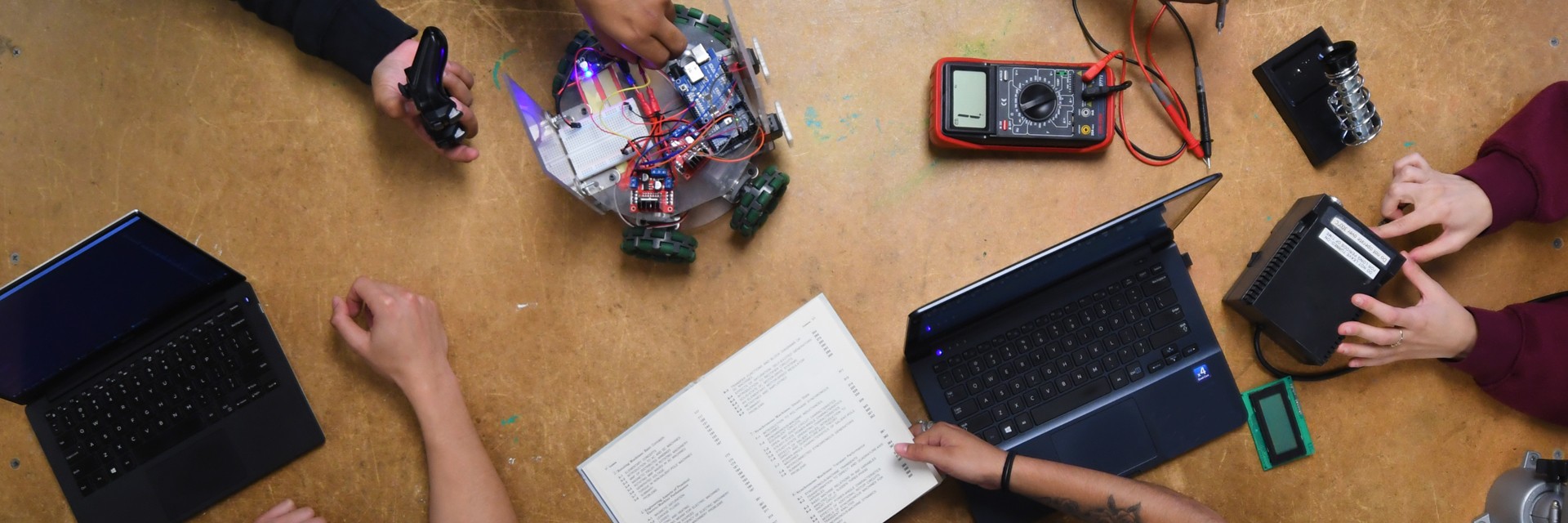California State University, Los Angeles
College of Engineering, Computer Science and Technology
Cadence University Program Member
Brief Description of Cadence Software utilized within the college:
PSPICE: PSPICE (professional version) is an integral part of course material. The Electrical and Computer Engineering department first introduces PSPICE into EE 290 (Electrical Engineering Computing). As this course is required and taken before the Electrical Engineering core and electives, PSPICE has become a major platform from which to expand student usage. Examples that illustrate the expanding use of PSPICE by students successfully completing EE 290 can be found in EE 336 (Electronics), EE 372 (Digital Electronics) and EE 439 (Analog Integrated Circuits). Both EE 372 and EE 439 have extensive course texts that cover PSPICE examples and CMOS required text. To further advance PSPICE usage the department is in the process of migrating course usage to the professional version.
SPW: The department of Electrical and Computer Engineering has access to SPW software, and this is used in advanced communications classes, graduate research and theses, and also in funded research in the area of blind equalization. A brief description of this software follows:
The Cadence® Signal Processing
Worksystem (SPW) is a block oriented design, simulation, and implementation
environment for communication systems. It provides the tools, needed for
interactive simulations, tests, and implementations for communication systems,
and other systems such as digital signal processing (DSP) designs. Typical
design applications include digital communication systems, image processing,
multimedia, radar systems, control systems, digital audio, and high-definition
television. We use SPW for the design, implementation, and performances
evaluation of digital communication systems.
SPW consists of several modules. The main modules are the File Manager, BDE,
SigCalc, the Simulation Manager, the SPB-I Simulator, and the DSP Library. In
addition, a design database is provided.
File Manager - is a unified tool that
lets you create and manage SPW libraries, access all types of SPW data files,
and invoke the various SPW tools.
Block Diagram Editor (BDE) - BDE graphically represents a system as a set
of functional blocks connected by wires. Each block is a symbol that represents
an operation, and the interconnecting wires symbolize the flow of signals
between blocks.
Signal Calculator (SigCalc) - creates input signals for the simulation of
your design, and analyze the output signals from your design. It can also
perform signal calculations, fixed-point operations, signal filtering, and
analyze functions such as Fast Fourier Transform (FFT) and cross correlations.
Simulation Manager - allows you to set up and run simulations. You can
choose to run a simulation with the standard SPB-I Simulator or the optional
Simulation Program Builder - Compiled (SPB-C) (formerly code Generation System)
Simulator. The Simulation Manager provides and interactive debugger to help
isolate design problems.
DSP Library - provides a standard set of library blocks to help you
design and simulate a wide range of digital signal processing systems. The SPW
DSP Library contain blocks you can use in BDE to build a signal-processing
design, but may only have minimal exposure to simulations and simulation
programming. The engineer is responsible for entering a correct description of
the system to be simulated in block diagram form, and for setting the parameter
values. SPW assumes all the responsibilities for generating the simulation
program, executing the simulation program and displaying the results. Since all
the basic bookkeeping functions are handled by SPW, you can concentrate on your
system solution, result analysis, and design iteration.
Cadence is a registered trademark of Cadence Design Systems, Inc., 2655 Seely Avenue, San Jose, CA 95134
This page was last updated on May 15, 2004 by Associate Dean Martin Roden ([email protected])

